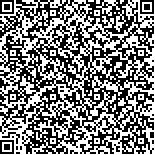| 摘要: |
| 以广西1998~2012年与甘蔗种植面积有关的数据为基础,通过制作面积变化曲线和分布图,对甘蔗种植面积时间分布和空间分布情况进行分析,得出甘蔗种植面积的时空分布情况及其规律; 通过主成分分析和多元线性回归方法,定性与定量相结合揭示广西甘蔗种植面积的驱动力。研究结果表明: ①1998年以来,广西甘蔗种植面积总体呈上升趋势, 15年来净增加51.4万hm2, 2008年以来基本稳定在110万hm2左右。②广西的崇左、来宾、南宁、柳州等4个市为甘蔗种植优势产区,种植面积占67.0%; 百色、河池、防城港、钦州、北海、贵港6市甘蔗种植面积不大、密度不高,作为优势产区的有力补充; 贺州、梧州、桂林、玉林等4市为非优势产区,已基本退出糖料蔗生产。③广西甘蔗种植面积变化的主驱动力为耕作条件、甘蔗价格和农业人口,甘蔗价格、农业机械总动力、农林牧渔业从业人员和耕地面积对甘蔗种植面积的影响较大,可以通过开发适宜的农业机械、完善价格体系和建立示范基地等途径,稳定甘蔗种植面积。 |
| 关键词: 广西 甘蔗 面积变化 驱动力 |
| DOI:10.7621/cjarrp.1005-9121.20150316 |
| 分类号: |
| 基金项目:2014年度广西水利水电科技计划项目《风力气压自控扬水灌溉技术在广西岩溶山区的应用研究》(201427) |
|
| STUDY OF SPECIAL AND TEMPORAL EVOLUTION OF SUGARCANE PLANTING AREA AND ITS DRIVING FORCE IN GUANGXI |
|
Wu Meiqiong
|
|
Guangxi Technology College of Water Conservancy and Electric Power,Nanning 530023
|
| Abstract: |
| Guangxi is one of the most important base for sugarcane production in China, accounting for 60% of sugarcane planting area, sugarcane and sugar yield, which plays an important role in domestic and international sugar market. Based on the data of sugarcane planting area from 1998 to 2012 in Guangxi, the graph of sugarcane planting area change was analyzed and the spatial distribution characteristics were analyzed with software Mapgis and Photoshop. Moreover, the principle component analysis was used to analyze related data from 1998 to 2002 in Guangxi with software Spss19.0 to get its driving force. Third, the multiple linear regressions about sugarcane planting area and its driving force were constructed to analyze data relationship. Finally, the impact of the major driving forces was analyzed based on principal component analysis and regression models. The results were shown as follows: First, as a whole, the sugarcane planting area in Guangxi from 1998 to 2012 had increased by 514,000 hm2 with annual increase of 34,300 hm2(12%), where the sugarcane planting area decreased from 614,000 hm2 to 508,700 hm2 from 1998 to 2000,with a reduction 26.4%, and increased from 508,700 hm2 to 1,090,100 hm2 from 2000 to 2008 with an increase of 94.7%.The increasing rate was obvious from 2005 to 2008. Since 2008, the sugarcane planting area in Guangxi had stablized 1,100 hm2. Second, among 14 prefecture-level city in Guangxi, 4 advantageous production zones including Chongzuo city, Laibin city, Nanning city and Liuzhou city accounted for 67.0% of the total planting area; Four disadvantageous cities including Hezhou city,Yulin city and Guilin city and Wuzhou city accounted for only 2.5% and had stopped the production of sugarcane; another 6 cities including Baise city, Hechi city, Fangchenggang city, Qinzhou city, Beihai city and Guigang city accounted for 31.5% of the total area and can be as important supplements. Third, cultivated condition, sugarcane price and agricultural population were the driving forces of sugarcane planting area change, and the sugarcane price, agricultural machinery, agricultural population and cultivated area were very important factors affecting the planting area, of which sugarcane price was only the positive factor. Methods including developing agricultural machinery in sugarcane production zones, reasonable sugarcane price and constructing high-produced sugarcane production base in advantageous zones as a model can stabilize sugarcane planting area. |
| Key words: Guangxi sugarcane cultivated area change driving force |

